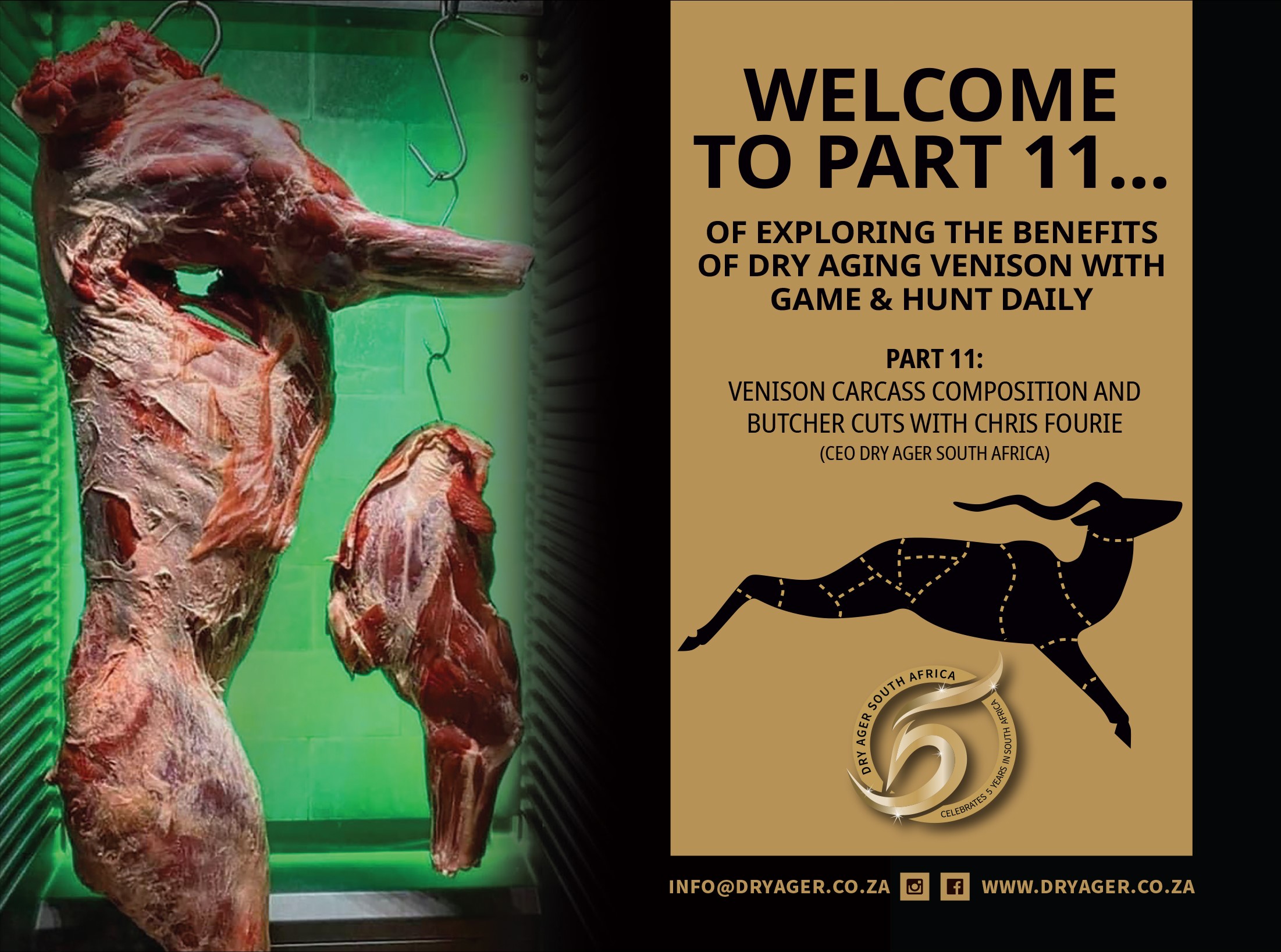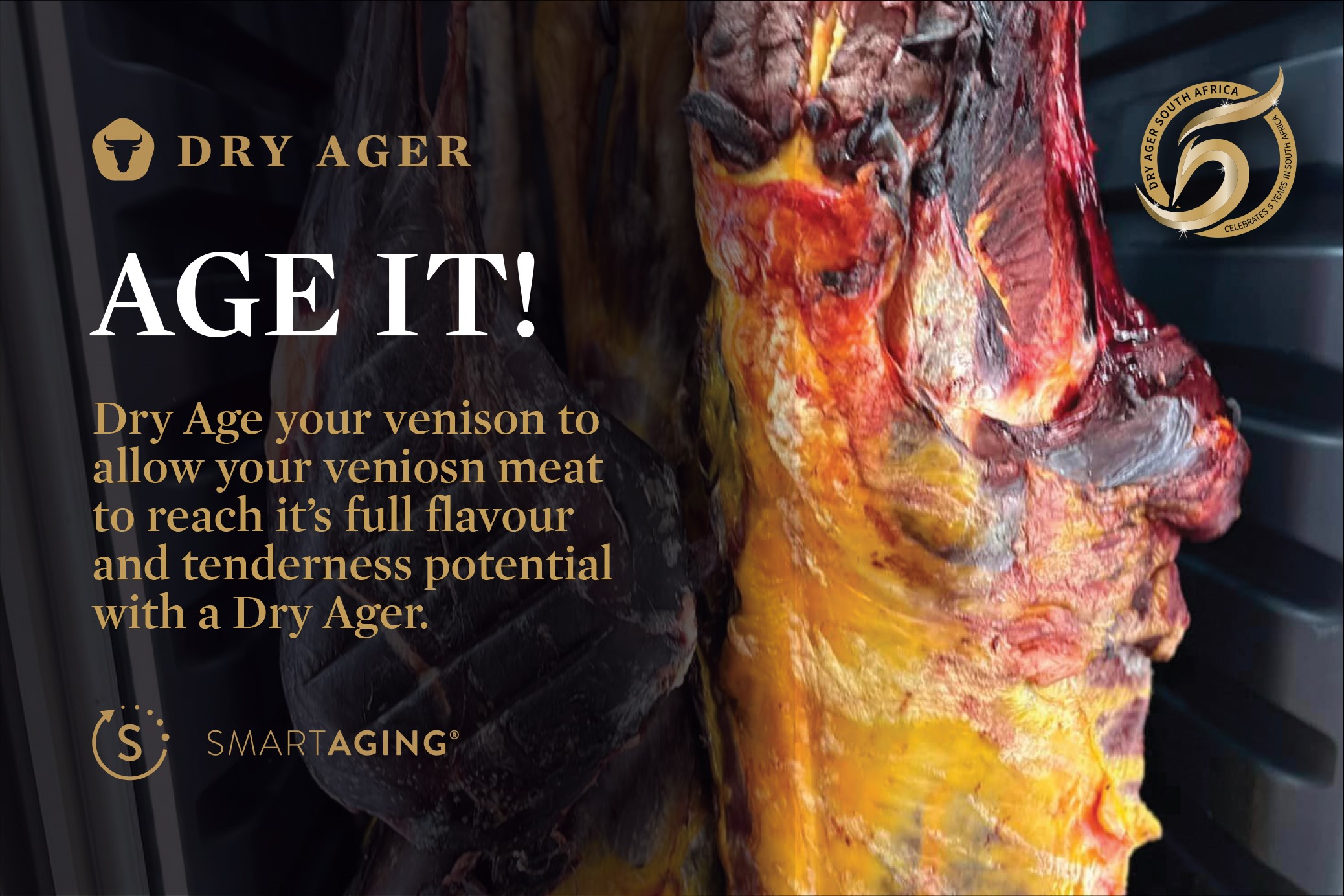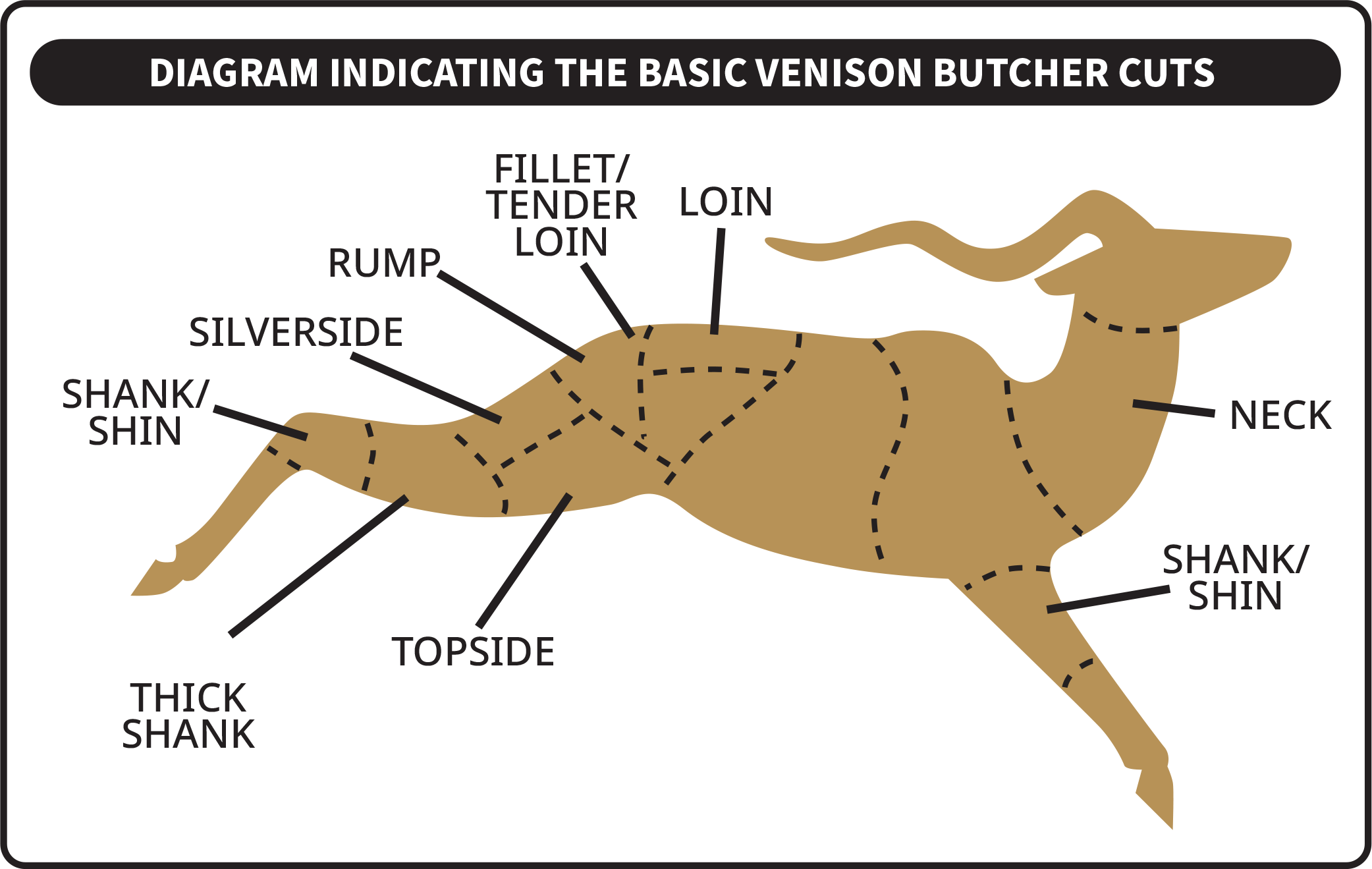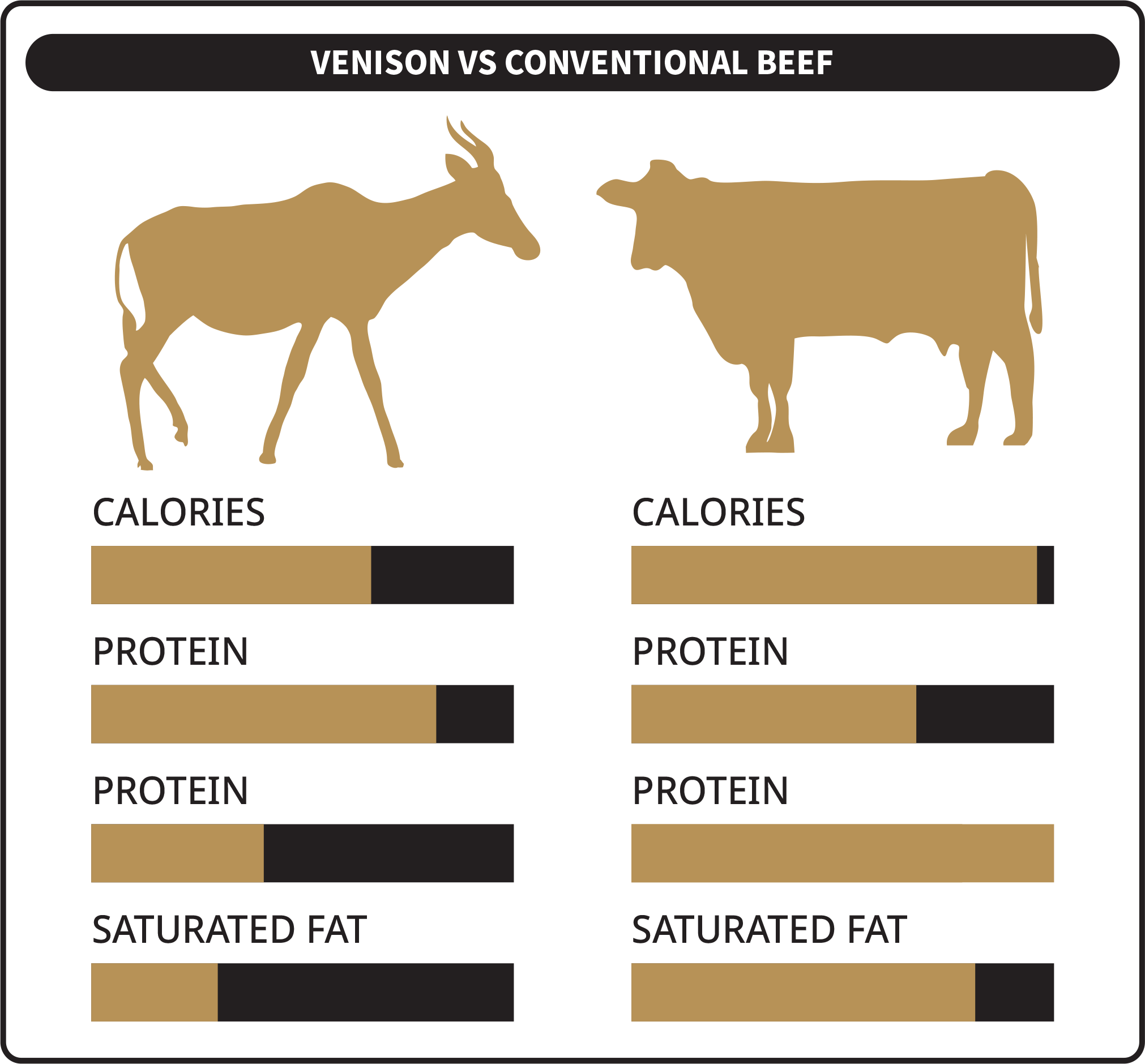Did you know that venison contains the greatest amount of iron per serving than any other red meat? Yip, it’s naturally low in sodium whilst rich in other nutrients including Potassium, niacin, riboflavin, Vitamin B1 and B6. It contains almost 50% less fat than beef and is a great red meat alternative. Just keep in mind that because venison is a low fat meat, be careful to not overcook venison meat cuts, preferably “medium” is suggested so as to preserve the tenderness.


PART 11: Venison Carcass Composition And Butcher Cuts With Chris Fourie

Venison is a rich and flavourful and very low fat. South African venison is mostly the meat from impala, kudu, eland, gemsbok, springbok, blesbok and wartog, but there are exceptions with private hunters enjoying the hunt of the larger animals.

Carcass composition:
To give you a basic overview… Springbok contains about 54% of the calories found in beef, having five times less saturated fat and only about 80% of the cholesterol of beef, and it’s also free of hormones and growth stimulants. Venison is very tasty, juicy and succulent alternative to beef. Lets look into a bit about the carcass composition of beef as the ratio of muscle, fat and bone in a beef carcass varies according to the water content, age and sex of an animal, but is not significantly different between carcasses of the same sex compared at the same age and fat content. A beef carcass classified A2 to A3 has on average a fat content of 18%, 15% bone and the rest is muscle. Dressing percentage of young stock varies from 50% as A1 class carcasses, to 53% as A2 and 54% to 56% as A3 to A5 class carcasses. Mature cows, when lean, have a dressing percentage of 48% to 49%, and 53% when fat.

Some things to know about South Africa’s favourite venison meats:
Blesbuck is totally underrated, this grass-eating buck is probably one of the best meats for cooking, grilling on the open flame braai and for biltong.
Buffalo is also similar in texture and taste to beef. And there’s no doubt that these are some of the biggest, juiciest steaks to enjoy.
Bushpig is redder in colour, bushpig meat is a little less game like tasting than that of the Warthog.
Bushbuck meat is softer than Impala, although similar in taste.
Duiker is extremely tender, with a very distinctive flavour.
Eland meat basically very similar to beef in texture and taste, just much healthier.
Gemsbok/Oryx is known for the tenderness of its meat. As Gemsbok eats only grass, making its meat consistently sweeter than other buck.
Guinea fowl is basically a hard-bodied chicken with a wild taste that is unique.
Impala meat is tender & juicy – best cooked medium rare. And is delicious if you want to make biltong.
Kudu is rich, tender and slightly wild tasting, and is one of the favourite of venison meats.
Nyala meat is a firm favourite amongst venison meat lovers and somewhere between Kudu and Bushbuck with a rich wild-tasting flavour.
Ostrich is a red meat and tastes similar to grass-fed beef with a bit of wildness. It is really a healthy option as it has low fat and high protein content.
Sable is a choice for its distinctive, rich flavour. It’s a great choice for venison meat lovers.
Springbok is one of the more favourite venison meat choices. It is tender & delicious and makes a great carpaccio.
Warthog is similar to pork but much tastier. so you get all the juiciness & tenderness of pork, but it’s leaner and with far more flavour.
Waterbuck is extremely tender, it makes melt-in-your mouth fillets and great biltong.
Wildebeest is probably the closest to beef, along with Eland. Its great for on the braai, delicious steaks and also biltong.
Wild Rabbit works well on the braai, in a roast or stew, and is extremely popular
Things to consider when you go hunting on how to best preserve your venison meat for the aging process.
Field dressing:
When hunting, skinning and gutting a hunted game animal (field dressing) is a necessary step in preserving meat from animals harvested in the wild.
Field dressing (the process of bleeding and gutting a hunted game animal) is needed to preserve meat from animals harvested in the wild. Field dressing the animal as soon as possible after your successful shot helps ensure ensure fast cooling of the carcass and prevents bacteria from spoiling the meat.
It is ideal that the carcass and deep muscle tissue must be cooled to a temperature of 7ºC or less within 24 hours of harvest in order to minimise bacterial growth.
If the animal was killed with a humane ethical shot to the heart/lung region, there will be no need to bleed the animal as the massive damage caused to the heart, veins and surrounding arteries will have resulted in adequate bleeding.
However any animals that have a damaged paunch must be dressed immediately. Any parts of the carcass that comes into contact with digesta or gut contents should not be taken for human consumption.
To skin the carcass as soon as the animal is killed, this is easily done by suspending the animal off the ground using a hunter’s gambrel and hoist. If the animal is too heavy to lift, or the location doesn’t allow for it, begin skinning the carcass on the ground.
It is important to do this as the skin is a natural insulator against sudden temperature change and slows down the cooling process. Removing the skin while the carcass is still warm improves the cooling of the carcass tremendously.
To remove the internal organs outdoors always look for a clean grassy area to work in so that vegetation does not stick to the carcass. Make sure the animal is lying on its back or suspended off the ground should you have a facility close by.
The reason for this is that after removing the internal organs, the cavity may have filled up with blood and other fluids. If the animal is lying flat then you will need to roll the animal onto its stomach and spread all four legs apart to allow fluids to drain out.

Trimming
It is needed to trim and discard any meat that has been in contact with faeces, stomach contents or any other questionable matter. It is also important to cut away any areas affected by the shot trauma. A bullet wound may result in having fragments of lead or copper in the surrounding flesh. These areas showing obvious bruising and contamination and should also be trimmed away.
Taking meat out of the bush
Small animals can be easily carried out of the bush, even if you’re hunting alone. But larger and heavy animals such as a for a bufallo or Oryx, so you may find that you need to either quarter the animal to make it easier to remove it from the field, should you not have a vehicle and man-power to accomodate transporting.
To keep the venison meat clean and dry, you should always cover the meat with a clean linen cloth or place it in a game bag.
For more information contact Chris Fourie on +27 64 684 9666 or email chris@dryagersa.co.za Keep a look out for Part 12 on 8 November 2023 and be introduced to benefits of The Dry Ager maturation handbook
Copyright 2023 | All Rights Reserved | Powered by WILD & JAG / GAME & HUNT

